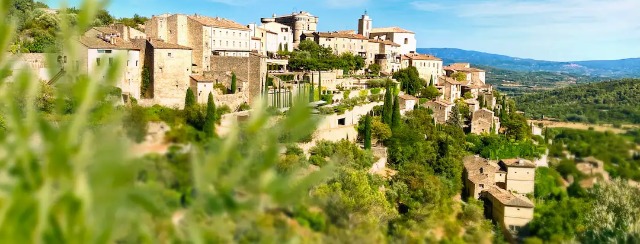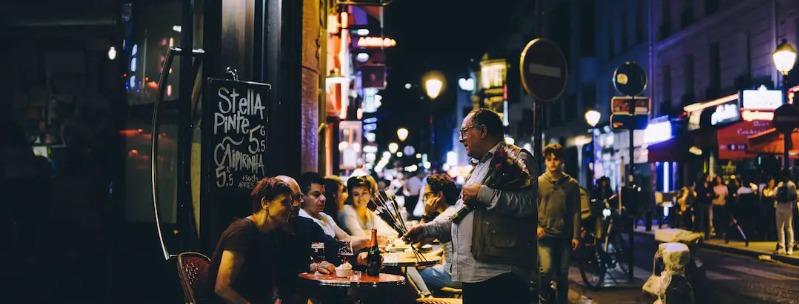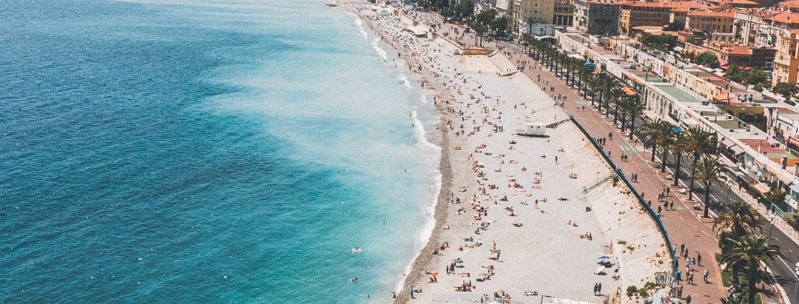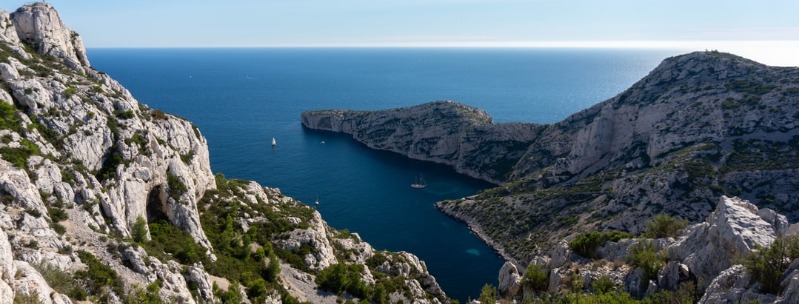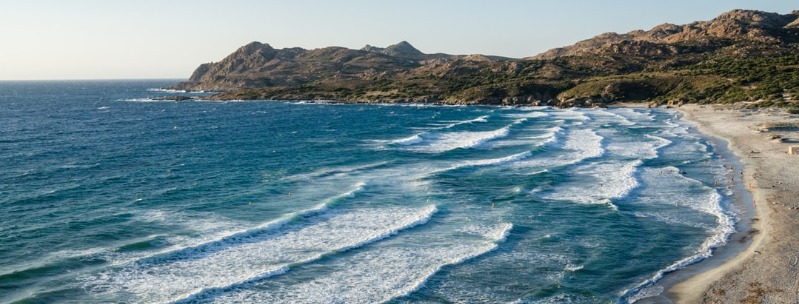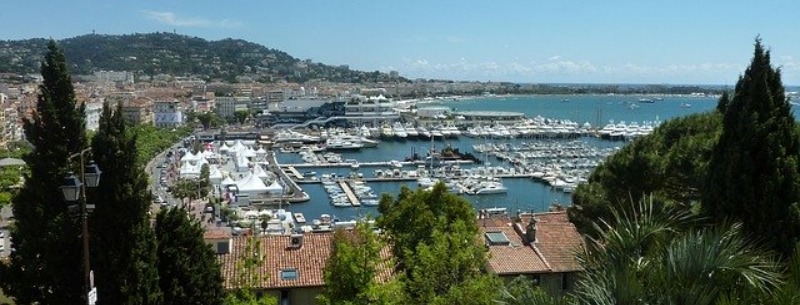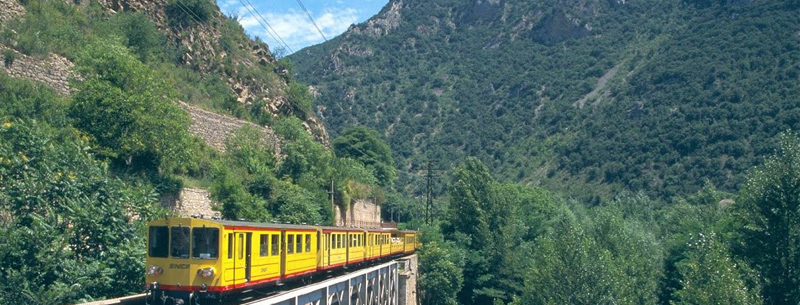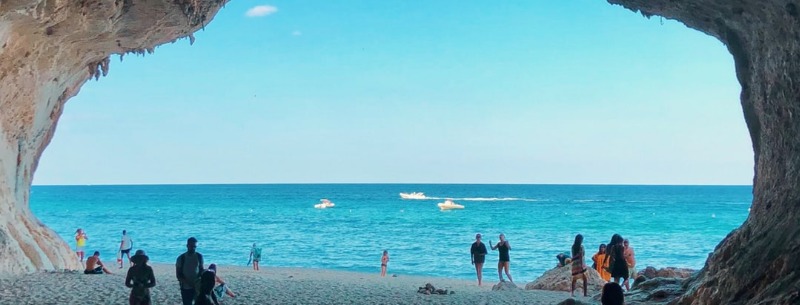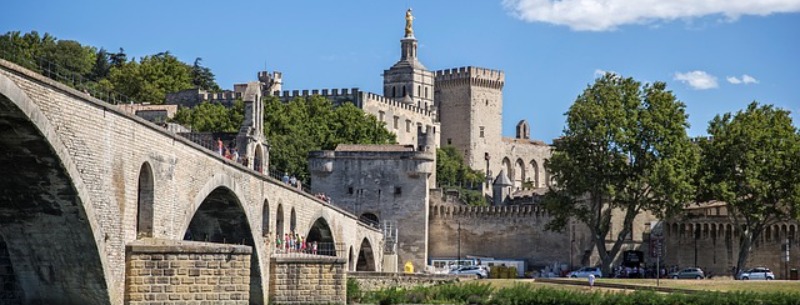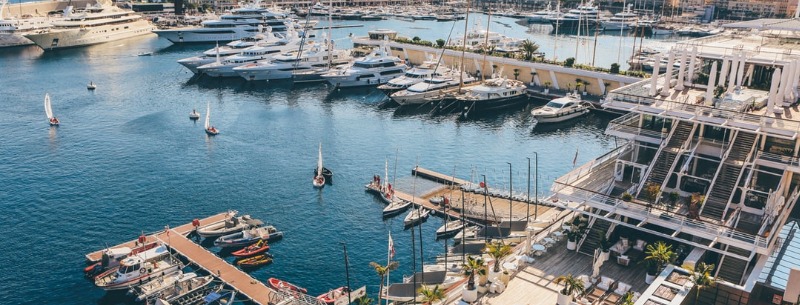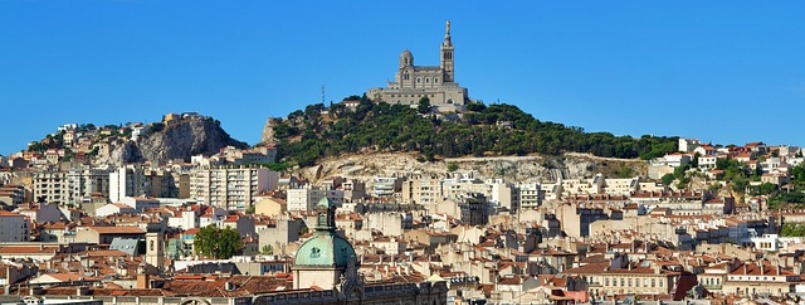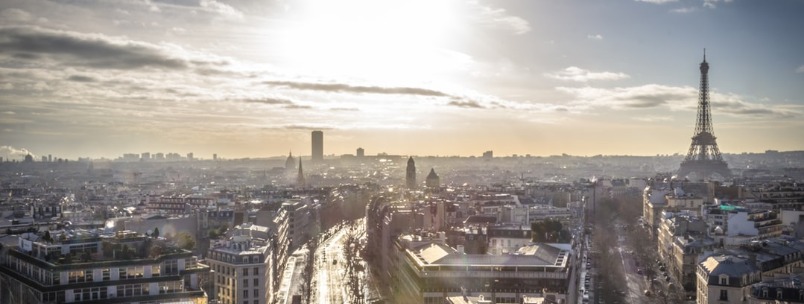2024 France Visitors Guide
The sheer physical diversity of France would be hard to exhaust in a lifetime of visits. The landscapes range from the fretted coasts of Brittany to the limestone hills of Provence, the canyons of the Pyrenees and the half-moon bays of Corsica, from the lushly wooded valleys of the Dordogne to the glaciated peaks of the Alps.
Each region looks and feels different, has its own style of architecture, its characteristic food, and often its own patois or dialect. Though the French word pays is the term for a whole country, local people frequently refer to their own immediate vicinity as mon pays – my country – and to a person from another town as a foreigner. This strong sense of regional identity, often expressed in the form of active separatist movements, as in Brittany and Corsica, has persisted over centuries in the teeth of centralized administrative control from Paris.
Perhaps the most striking feature of the French countryside is the sense of space. There are huge tracts of woodland and undeveloped land without a house in sight. Industrialization came relatively late, and the country remains very rural. Away from the main urban centers, hundreds of towns and villages have changed only slowly and organically, their old houses and streets intact, as much a part of the natural landscape as the rivers, hills, and fields.
The nation’s legacy of history and culture is so widely dispersed across the land that even if you were to confine your traveling to one particular region you would still have a powerful sense of the past without having to seek out major sights. With its wealth of local detail, France is an ideal country for dawdling; there is always something to catch the eye and gratify the senses, whether you are meandering down a lane, picnicking by a slow, green river, or sipping Pernod in a village café. There is also endless scope for all kinds of outdoor activities, from walking, canoeing, and cycling to the more expensive pleasures of skiing and sailing.
If you need more than urban stimuli to activate the pleasure buds – clubs, shops, fashion, movies, music, hanging out with the beautiful and famous – then the great cities provide them in abundance. Paris, of course, is an outstanding cultural center, with its stunning contemporary buildings and atmospheric back streets, its art, and its ethnic diversity. And the great provincial cities like Lille and Lyon, Bordeaux, Toulouse, Marseille, and Nice vie with the capital and each other, like the city-states of old, for prestige in the arts, ascendancy in sport and innovation in urban transport.
For a thousand years and more, France has been at the cutting edge of European development, and the legacy of this wealth, energy, and experience is everywhere evident in the astonishing variety of things to see: from the Gothic cathedrals of the north to the Romanesque churches of the center and west, the châteaux of the Loire, the Roman monuments of the south, the ruined castles of the English and the Cathars and the Dordogne’s prehistoric cave paintings. If not all the legacy is so tangible – the literature, music, and ideas of the 1789 Revolution, for example – much has been recuperated and illustrated in museums and galleries across the nation, from colonial history to fishing techniques, airplane design to textiles, migrant shepherds to manicure, battlefields and coal mines.
Many of the museums are models of clarity and modern design. Among those that the French do best are museums devoted to local arts, crafts, and customs like the Musée National des Arts et Traditions Populaires in Paris and the Musée Dauphinois in Grenoble. But inevitably first place must go to the fabulous collections of fine art, many of which are in Paris, for the simple reason that the city has nurtured so many of the finest creative artists of the last hundred years, both French, Monet and Matisse for example, and foreign, such as Picasso and Van Gogh.
If you are quite untroubled by a need to improve your mind in the contemplation of old stones and works of art, France is equally well endowed to satisfy the grosser appetites. The French have made high art of daily life: eating, drinking, dressing, moving and simply being. The Pleasures of the palate run from the simplest picnic of crusty baguette, ham, and cheese washed down by an inexpensive red wine through what must be the most elaborate takeaway food in the world, available from practically every charcuterie; such basic regional dishes as cassoulet; the liver-destroying riches of Périgord and Burgundy cuisine; the fruits of the sea; extravagant pastries and ice-cream cakes; to the trance-inducing refinements – and prices – of the great chefs. And there are wines to match, at all prices, and not just feel inadequate in the face of all this choice, never be afraid to ask for advice, for most French people are true devotees, ever ready to explain the arcane mysteries to the uninitiated.
Where to go and When
France is easy to travel around. Restaurants and hotels proliferate, the lower-budget ones being much cheaper than most other developed Western European countries. Train services are admirably efficient, as is the road network – especially the (toll-paying) autoroutes – and cyclists are much admired and encouraged. Information is highly organized and available from tourist offices across the country, as well as from specialist organizations for walkers, cyclists, campers, and so on.
There are all kinds of pegs on which to hang a holiday in France: a city, a region, a river or a mountain range, physical activities, cathedrals, châteaux. And in many cases, your choice will determine the best time of year to go. Unless you’re a skier, for example, you wouldn’t choose the mountains between November and May; nor at this time would you head for the seaside – except for the Mediterranean coast which is at its most attractive in spring. Climate, otherwise, need not be a major consideration in planning when to go. Northern France, like nearby Britain, is wet and unpredictable. Paris perhaps has a marginally better climate than New York, rarely reaching the extremes of heat and cold of that city, but only south of the Loire does the weather become significantly warmer. West coast weather, even in the south, is tempered by the proximity of the Atlantic, subject to violent storms and close thundery days even in summer. The center and east, as you leave the coasts behind, have a more continental climate, with colder winters and hotter summers. The most reliable weather is along and behind the Mediterranean coastline and on Corsica, where winter is short and summer long and hot.
The single most important factor in deciding when to visit France is tourism itself. As most French people take their holidays in their own country, it’s as well to avoid the main French holiday periods – mid-July to the end of August, with August being particularly bad. You can easily walk a kilometer or more in Paris, for example, in search of an open boulangerie, and the city seems deserted by all except fellow tourists. Prices in the resorts rise to take full advantage and often you can’t find a room for love or money and not even a space in the campsites on the Côte d’Azur. The seaside is the worst, but the mountains and popular regions like the Dordogne are not far behind. Easter, too, is a bad time for Paris; half of Europe’s schoolchildren seem to descend on the city. For the same reasons, ski buffs should keep in mind the February school ski break. And no one who values life, limb, and sanity should ever be caught on the roads the last weekend of July or August, and least of all on the weekend of August 15.
Best of France
France has one of the most exciting cities in the world, Paris, attracting millions of tourist each year. This city will provide you with a taste of everything, shopping, sophisticated culture, exquisite cuisines, fine wines, romantic chateauxs, museums, parks or just absorbing the scenic beauty of its buildings.
Loire Valley
Loire Valley is a perfect place for wine lovers. It is located in the center of France and is famously known due to it spectacular historical villages, chateauxs, artifacts, and vineyards. Loire Valley is one of the best places for a romantic getaway, Make a point of visiting and you will certainly have an interesting story to tell once you’re back.
La Rochelle
Superbly intact as a medieval port, thanks to the efforts of a past communist mayor whose legacy includes the free bicycles you can ride around town, La Rochelle offers beautiful beaches, delicious seafood, and boat trips to surrounding islands.
The French Alps
The French Alps are glorious in summer. To go walking, take one of the many ski lifts that operate year-round. Pretty towns to visit include Annecy, on its turquoise lake, set against the peaks of La Tourette.
Paris
Paris is one of the most exciting places in France and the city attracts about 45 million tourists each year. It is the capital city of France and is well known for its romantic ambiance, fashion, art and culture. Make sure the Notre Dame and the Arc de Triomphe, de l’Étoile, which is one of the most famous monuments in Paris.
There is so much life on the streets of Paris, plus a tremendous amount of public art and wonderful architecture, that just wandering the streets is a delight and doesn’t cost you any money. The city center is very compact so there’s little chance of getting lost.
Muse d`Orsay museum
Located in Paris and is adorned with numerous artifacts and paintings and is a good place for art lovers to hang out. The museum is rich in the world’s most famous paintings from artists around the world such as Van Gogh, Camille Pissarro, and Alfred Sisley. The paintings are known as impressionism paintings and use bold colors, and make use of natural light and outdoor settings.
Nice
The City of Nice boasts many gorgeous Mediterranean beaches to swim, take a boat trip, sunbathe or stroll along the sand. Nice is famous for its vibrant shopping and one can experience the retail worlds of the rich and famous, high-end luxury brands and designer fashion.
Champagne
If you like drinking bubbly, there’s no greater experience than quaffing the stuff in the region where it’s made. A visit to Reims will enable you to catch one of France’s most impressive Gothic cathedrals, as well as take in several caves, including the famous Veuve Cliquot-Ponsardin.
Chartres Cathedral
Go to Chartres and see the Cathédral Notre-Dame, whose greatest asset is its magnificent rose window. Situated on the hilltop, the enormous building has plenty of other enthralling visible wonders, such as the geometry of the building and the 130 other stained glass windows.
Provence
From its Medieval hilltop villages, through a rich agricultural countryside of vineyards, olive groves, and fields of sunflowers, to the fascinating cities of Arles and Aix en Provence, this is perhaps the most irresistible area of France.
Cheese
For cheese, head for Normandy, particularly the area known as the Pays d’Auge, whose lush green fields help produce the rich milk so essential for the area’s delicious Camembert.
Cycling
The country that runs the world’s most famous bike race (the Tour de France) is a rewarding place to cycle, and you may even get bigger servings in local restos if you indicate your means of transport. You don’t have to rely entirely on pedal power, however – you can take bikes on certain trains for free.
Camargue
The Camargue is a flat, marshy delta area, with flamingo-filled lagoons. Its long stretches of coastline include the popular resort of Saintes-Maries-de-la-Mer, which offers plenty of facilities, and less commercialized areas, such as the plage de Piemancon.
Marseille
Marseille is another exciting spot to spend your vacation while in France. It is one of the oldest cities in France located on the southeast coast. This seaside city boasts its medieval architectural designs and spectacular cultural venues that showcase the culture of the French such as the vibrant Vieux Port (Old Port).
Marseille, the second-most populous city of France, though undeniably deprived, is a wonderful place to visit. It’s a down-to-earth yet cosmopolitan city that spirals out from the old port. To check out its excellent seafood cuisine try the Cours Julien behind the Vieux Port’s southern quay. The most renowned and populated city in France after Paris, MARSEILLE has – like the capital – prospered and been ransacked over the centuries. It has lost its privileges to sundry French kings and foreign armies recovered its fortunes, suffered plagues, religious bigotry, republican and royalist Terror, and had its own Commune and Bastille-storming. It was the presence of so many Marseillaise Revolutionaries marching from the Rhine to Paris in 1792 that gave the Hymn of the Army of the Rhine its name of La Marseillaise , later to become the national anthem.
People of France
Visual appearance is important to the French. No effort is too great to make things look good: witness the food shops in even the poorest neighborhoods of a city, always sparkling clean and beautifully displayed. The people, too, take pride in looking neat and sharp; they inspect others and expect to be looked at. Life is theatre, lived much more in the public eye – especially in the warm Mediterranean south – than in Anglo-Saxon societies. And for the visitor, it’s a free and entertaining spectacle.
The French are extremely courteous with each other – it’s not unusual for someone entering a restaurant to say “Good evening” to the entire company – and rather formal in their manners. At the same time, if they want something, they may be quite direct in ways that are disconcerting for Anglo-Saxons brought up in the belief that it’s improper to state clearly what you mean or feel. If you are feeling self-conscious about coping with the language, this can seem like rudeness; it isn’t. If you observe the formalities and make an effort to communicate, you’ll find the French as friendly and interested as anyone else.
As for their reputed arrogance, the French are certainly proud of their culture, something that is reinforced by the education system. Artists and thinkers are held in high esteem in France and their opinions are listened to. Even prime ministers tend to be literate, and are often accomplished, authors. But in a world dominated by commercial values and, in addition, the English language, the French (not unnaturally, for their language was once the lingua franca of the educated) feel this culture is under threat.
Food & Drink
French cuisine has taken a bit of a knocking in recent years. The wonderful ingredients are still there, as every town and village market testifies. But those little family restaurants serving classic peasant dishes that celebrate the region’s produce in each exquisite mouthful – and where the bill is less than 100F/?15 – are few and far between nowadays. The processed, boil-in-the-bag, and ready-to-microwave productions of the global food industry, all so inimical to the basic culinary arts of France, are making serious inroads. That’s not to say you can’t eat well in France – far from it – but be prepared for disappointments at run-of-the-mill establishments.
In the rarefied world of haute cuisine, where the top chefs are national celebrities, a battle is currently raging between traditionalists, determined to preserve the purity of French cuisine, and those who experiment with different flavors from around the world to create novel combinations, for example, seafood and cinnamon. At this level, French food is still brilliant – in both camps – and the good news is that prices are continuing to come down. Many gourmet palaces offer weekday lunchtime menus where you can sample culinary genius for around 290F/?44.
France is also a great place for foreign cuisine, in particular, North African, Caribbean (known as Antillais ), and Asiatic. Moroccan, Thai or Vietnamese restaurants are not necessarily cheap options but they are usually good value for money.
On the whole, vegetarians can expect a somewhat lean time in France. A few cities have specifically vegetarian restaurants (detailed in the text), but elsewhere you’ll have to hope you find a sympathetic restaurant (crêperies and pizzerias can be good standbys). Sometimes they’re willing to replace a meat dish on the menu fixe with an omelet; other times you’ll have to pick your way through the carte. Remember the phrase “Je suis végétarien(ne); il y a quelques plats sans viande?” (I’m a vegetarian; are there any non-meat dishes?). Vegans, however, should probably forget all about eating in French restaurants and stick to self-catering.
Getting Around
With the most extensive train network in western Europe, France is a country in which to travel by rail. The nationally owned French train company, the SNCF (Société Nationale des Chemins de Fer), runs fast, modern trains. In rural areas where branch lines have been closed, routes are covered by buses operated by the SNCF. It’s an integrated service, with buses timetabled to meet trains and the same ticket covering both.
The private bus services that supplement the SNCF services are confusing and uncoordinated. Flying within France has the obvious advantage of speed, but is only recommended for those short on time and long on cash. Aside from Corsica, which can also be reached by air, France’s islands are serviced only by ferries, some of which are seasonal and not all of which are equipped to carry vehicles.
For a more private kind of independent transport, by car or bicycle, you’ll need to be aware of a number of French road rules and peculiarities. Hitching is also an option but is not easy and is becoming less and less popular. Walking, on the extensive network of “GR” footpaths, is recommended, as are the more specialist realms of inland boating and cross-country skiing, both of which have a high profile in France.
French Festivals
It’s hard to beat the experience of arriving in a small French village, expecting no more than a bed for the night, to discover the streets decked out with flags and streamers, a band playing in the square and the entire population out celebrating the feast of their patron saint. Apart from Bastille Day (July 14) and the Assumption of the Virgin Mary (August 15), there are traditional folk festivals still thriving in Brittany and the remote rural regions of the south, as well as a full calendar of festivals devoted to films and to music from jazz and folk to rock and classical.
Catholicism is deeply ingrained in the culture of French rural areas, and as a result of religious feast days still bring people out in all their finery, ready to indulge once Mass has been said. Most of these occasions, along with the celebrations around wine and food production, are very genuine affairs. Other festivals, based for example on historical events, folklore or literature, are often obviously money-spinners and shows for municipal prestige – not something to go out of your way for.
One folk festival that is definitely worth attending is the Inter-Celtic event held at Lorient in Brittany every August. Another annual event with deep historical roots is the great gypsy gathering at Les-Stes-Maries-de-la-Mer in the Camargue. Though exploited for every last century and, in recent years, given a heavy police presence, it is a unique and exhilarating spectacle to be part of.
Bonfires are lit and fireworks set off for Bastille Day, for the Fête de St-Jean on June 24, three days from the summer solstice, and for the Assumption of the Virgin Mary on August 15. Mardi Gras – the last blowout before Lent – is far less of an occasion than in other Catholic countries, although the towns on the Côte d’Azur put on a show at great expense and in questionable taste.
